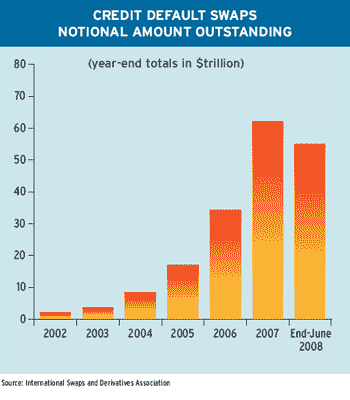
The results from NPV show some similarities to the figures obtained from IRR under a similar set of conditions. At the same time, both methods offer contradicting results in cases where the circumstances are different. Under the NPV approach, the present value can be calculated by discounting a project’s future cash flow at predefined rates known as cut off rates. However, under the IRR approach, cash flow is discounted at suitable rates using a trial and error method that equates to a present value.

When you are analyzing a single conventional project, both NPV and IRR will provide you the same indicator about whether to accept the project or not. However, when comparing two projects, the NPV and IRR may provide conflicting results. It may be so that one project has higher NPV while the other has a higher IRR.
Time Value of Money
See different types of capital budgeting techniques, such as payback period and internal rate of return. (i) Independent investment proposals which do not compete with one another and which may be either accepted or rejected on the basis of a minimum required rate of return. But let’s look further if the cost of capital raised for both projects is 11%. In this instance, the NPV of Project Y is $2,407,063 and Project Z $2,312,414. If the NPV is the only screening criterion, Project Y must be accepted. The problem arises in case of mutually exclusive projects when a company should try to select the best one among others.
Thus, there is a conflict in ranking of the two mutually exclusive proposals according to the two methods. Under these circumstances, we would suggest to take up Project B which gives a higher net present value because in doing so the firm will be able to maximize the wealth of the shareholders. The reason for similarity of results in the above cases lies in the basis of decision-making in the two methods. Under NPV method, a proposal is accepted if its net present value is positive, whereas, under IRR method it is accepted if the internal rate of return is higher than the cut off rate.
Let’s have a look first at what each of the two discounting rates stands for. If these two projects were independent, it wouldn’t matter much because the firm can accept both the projects. However, in case of mutually exclusive projects, the firm needs to decide one of the two projects to invest in. Such conflict between NPV and IRR is the reason why net present value is considered a better screening criterion than the internal rate of return.
What is NPV vs IRR?
However, they don’t always agree and tell us what we want to know, especially when there are two competing projects with equally favorable alternatives. That said, most project managers prefer to use NPV because it is considered the best when ranking mutually exclusive projects. Capital budgeting measures potential risks and gives returns at present value by using discounting factor, this helps a company make better decisions with limited resources. Companies use this tool to ensure value addition in business by choosing good projects. In this case, Project A has lower NPV compared to Project B but has higher IRR.
It can happen that one project has a higher NPV but lower IRR, and the other one has a higher IRR but lower NPV. (ii) Conventional investment proposals which involve cash outflows or outlays in the initial period followed by a series of cash inflows. (ii) The NPV method recognizes the importance of market rate of interest or cost of capital.
The present value is calculated to an amount equal to the investment made. If IRR is the preferred method, the discount rate is often not predetermined, as would be the case with NPV. One duty of a financial manager is to choose investments with satisfactory cash flows and rates of return. Therefore, a financial manager must be able to decide whether an investment is worth undertaking and be able to choose intelligently between two or more alternatives. To do this, a sound procedure to evaluate, compare, and select projects is needed.
Capital Budgeting
For one, conflicting results arise because of substantial differences in the amount of capital outlay of the project proposals under evaluation. Sometimes, the conflict arises due to issues of differences in cash flow timing and patterns of the project proposals or differences in the expected service period of the proposed projects. Both methods show comparable results regarding “accept or reject” decisions where independent investment project proposals are concerned.

With NPV, proposals are usually accepted if they have a net positive value. In contrast, IRR is often accepted if the resulting IRR has a higher value compared to the existing cutoff rate. Projects with a positive net present value also show a higher internal rate of return greater than the base value. NPV’s presumption is that intermediate cash flow is reinvested at cutoff rate, while under the IRR approach, an intermediate cash flow is invested at the prevailing internal rate of return.
Cause of NPV and IRR conflict
This difference could occur because of the different cash flow patterns in the two projects. (iv) The results shown by NPV method are similar to that of IRR method under certain situations, whereas, the two give contradictory results under some other circumstances. However, it must be remembered that NPV method using a predetermined cut -off rate is more reliable than the IRR method for ranking two or more capital investment proposals. conflict between npv and irr Let us make an in-depth study of the difference, similarities and conflicts between Net Present Value (NPV) and Internal Rate of Return (IRR) methods of capital budgeting. However, in case of mutually-exclusive projects, an NPV and IRR conflict may arise in which one project has a higher NPV but the other has higher IRR. Mutually exclusive projects are projects in which acceptance of one project excludes the others from consideration.
Net present value (NPV) and internal rate of return (IRR) are two of the most widely used investment analysis and capital budgeting techniques. They are similar in the sense that both are discounted cash flow models i.e. they incorporate the time value of money. But they also differ in their main approach and their strengths and weaknesses. NPV is an absolute measure i.e. it is the dollar amount of value added or lost by undertaking a project. IRR, on the other hand, is a relative measure i.e. it is the rate of return that a project offers over its lifespan. In such cases, while choosing among mutually exclusive projects, one should always select the project giving the largest positive net present value using appropriate cost of capital or predetermined cut off rate.
Economic and Financial Issues in Renewable Energy Arbitration – GAR
Economic and Financial Issues in Renewable Energy Arbitration.
Posted: Fri, 11 Nov 2022 08:00:00 GMT [source]
In this case, the two proposals don’t compete, and they are accepted or rejected based on the minimum rate of return on the market. When facing such a situation, the project with a higher NPV should be chosen because there is an inherent reinvestment assumption. In our calculation, there is an assumption that the cash flows will be reinvested at the same discount rate at which they are discounted.
We recommend reliance on the net present value as a screening criterion in case of such conflict between mutually exclusive projects. The background of such a recommendation is that the reinvestment rate plays the key role. The reinvestment rate equal to the cost of capital is a more realistic assumption, especially in the long run.
In the NPV calculation, the implicit assumption for reinvestment rate is 10%. In IRR, the implicit reinvestment rate assumption is of 29% or 25%. The reinvestment rate of 29% or 25% in IRR is quite unrealistic compared to NPV. IRR is also easier to calculate because it does not need estimation of cost of capital or hurdle rate. However, this same convenience can become a disadvantage if we accept projects without comparison to cost of capital. Conventional proposals often involve a cash outflow during the initial stage and are usually followed by a number of cash inflows.
- In our calculation, there is an assumption that the cash flows will be reinvested at the same discount rate at which they are discounted.
- Again, if these were mutually exclusive projects, we should choose the one with higher NPV, that is, project B.
- In capital budgeting, NPV and IRR conflict refers to a situation in which the NPV method ranks projects differently from the IRR method.
- Project A needs $10 million investment and generates $10 million each in year 1 and year 2.
The conflict either arises due to relative size of the project or due to the different cash flow distribution of the projects. When faced with difficult situations and a choice must be made between two competing projects, it is best to choose a project with a larger positive net value by using cutoff rate or a fitting cost of capital. IRR or Internal Rate of Return is a form of metric applicable in capital budgeting. It is used to estimate the profitability of a probable business venture.
NPV and IRR: Differences, Similarities and Conflicts Capital Budgeting
Without careful analysis, an investor might select a high NPV project ignoring the fact that many smaller NPV projects could be completed with the same investment resulting in higher aggregate NPV. As the NPV is not skewed by the overstated reinvestment rate assumption, hence it is the preferred method. Project A needs $10 million investment and generates $10 million each in year 1 and year 2. It has NPV of $7.4 million at a discount rate of 10% and IRR of 61.8%.
It arrives at the amount to be invested in a given project so that its anticipated earnings would recover the amount invested in the project at market rate. In capital budgeting, NPV and IRR conflict refers to a situation in which the NPV method ranks projects differently from the IRR method. In event of such a difference, a company should accept project(s) with higher NPV. NPV’s predefined cutoff rates are quite reliable compared to IRR when it comes to ranking more than two project proposals. The above example illustrated the conflicting results of NPV and IRR due to differing cash flow patterns. The conflicting results can also occur because of the size and investment of the projects.





